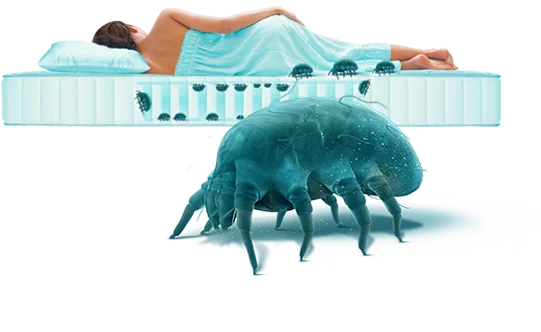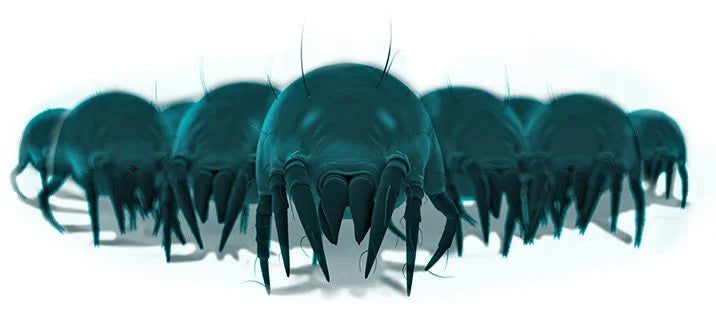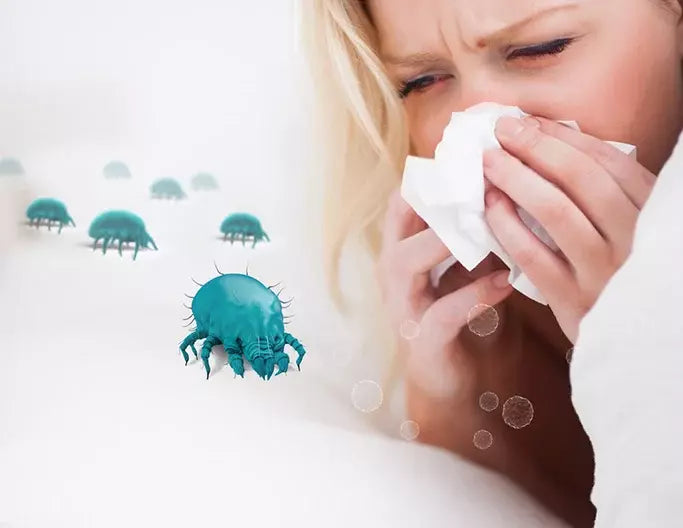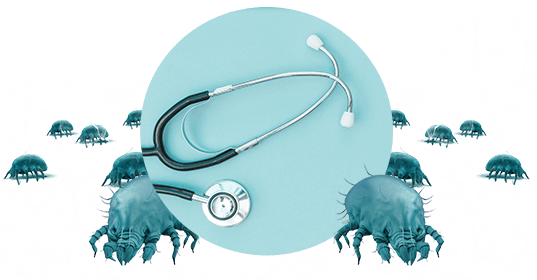
Dust mites: up to 2 million in your mattress

House dust mites. We’ve all heard of them, but we rarely know exactly what they are — or just how many of them we come into contact with on a daily basis. Get the facts about these crawly, transparent arachnids that are probably feasting on your dead skin cells every night.
Dust mites 101
Related to spiders and ticks, dust mites are arachnids too small to be seen by the human eye — about 0.2 to 0.3 mm in length. They are also see-through, making it even harder to detect them among the other dust particles in your home.
![]()
There are four main species of dust mite. Of these, one lives primarily in the Americas, while the other is more commonly found in Europe. Because they require high humidity to survive and breed, dust mites don’t like to live in cold, dry climates.

Their life cycle takes between 65-100 days and involves 5 different life stages, from egg and nymph to adult. An adult female dust mite lays up to 100 eggs in her life, which is how dust mite populations in a mattress or piece of furniture can explode from 1 to 1,000,000 in a matter of weeks.
Proteins in their feces and body parts can kill human cells
The 8 hooked legs of dust mites are perfect for latching onto the fibers of your bedding, mattress and pillows. However, it’s not the dust mites themselves that cause your allergy symptoms ; it’s the enzymes released by their droppings and decomposing body parts when they come into contact with your lung tissue and skin. These enzymes are proven to cause cell death in humans. Not so pleasant, right?

They love to party, and you’re bringing the food and drinks
Their Latin name is dermatophagoides, meaning ‘skin eating’, and for good reason: the 1 to 1.5 grams of skin cells you shed every night provide a week’s worth of food for 1 million of these little beasts. The high-humidity environment created by your sweat is the ideal breeding ground for their young.
Imagine the orgy of feasting and breeding that’s taking place against your skin as you sleep. Unsettled? So are we.
The problem is getting worse
As our indoor environments become more isolated and our climates more controlled, house dust mite populations have grown steadily around the world. Before textiles like blankets, clothing, bedding and carpets, dust mites were far less common in our homes .
Compounding the impacts of this issue is the fact that humans are becoming increasingly allergic. Some researchers hypothesise that higher allergy and asthma rates may be caused by overly clean living conditions and the fact that we are exposed to germs, microbes and allergens less frequently. As a result, our immune systems fail to “learn” which of these is harmful or harmless, and overreact to every stimulus.
While other research suggests that the causes of this trend are more complex, it’s a fact that more adults and children are suffering from dust mite allergy than ever before, and so are our pets.
Interested in learning more about the impacts of dust mite allergy? Get more information from our experts.

Benjamin Tillier
Benjamin Tillier has more than 18 years of international experience in various sectors. He has been active in the healthcare industry since 2011. In regular contact with dust mites allergic people as well as professors and allergy specialists, he acquired an in-depth knowledge in this field.
Related articles



